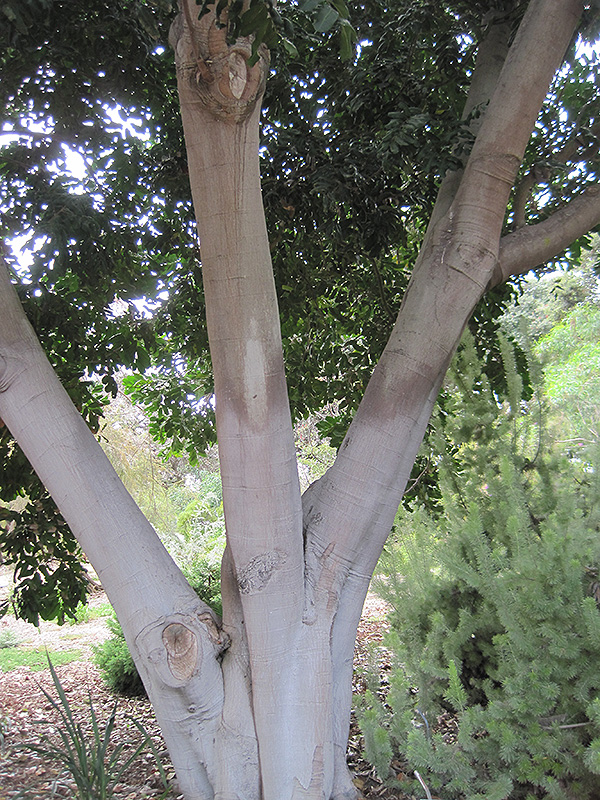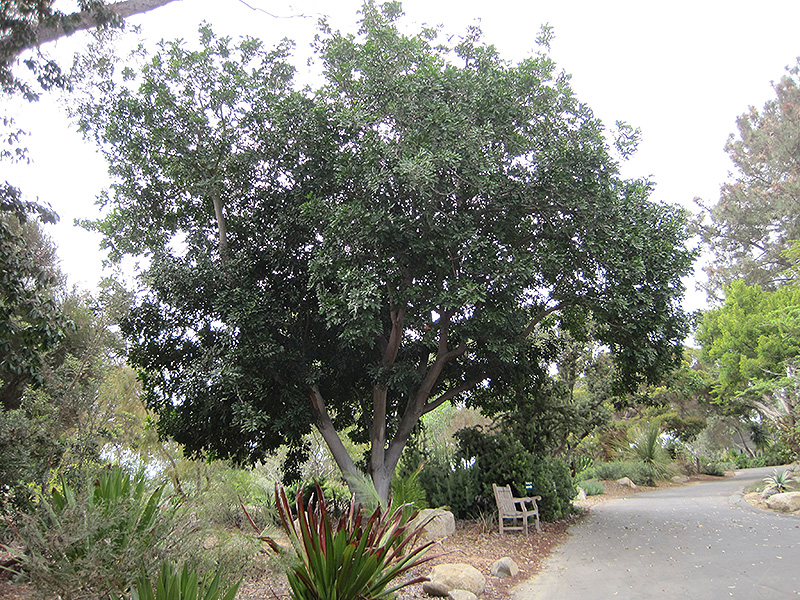Plant Finder
Height: 35 feet
Spread: 30 feet
Sunlight:
![]()
![]()
Hardiness Zone: 9a
Other Names: Beach Tamarind, Green-leaved Tamarind, Tuckeroo
Description:
A handsome, tough street tree with excellent ornamental attributes; large, glossy pinnate leaves create a lovely canopy; greenish-white flower clusters in winter are followed by orange-yellow fruit; attractive orange-brown bark; invasive in some areas
Ornamental Features
Carrotwood has attractive dark green foliage with grayish green undersides on a tree with an upright spreading habit of growth. The glossy oval pinnately compound leaves are highly ornamental and remain dark green throughout the winter. It features showy clusters of chartreuse flowers with white overtones at the ends of the branches in late winter. However, the fruit can be messy in the landscape and may require occasional clean-up. The smooth brown bark and brick red branches are extremely showy and add significant winter interest.
Landscape Attributes
Carrotwood is a multi-stemmed evergreen tree with an upright spreading habit of growth. Its average texture blends into the landscape, but can be balanced by one or two finer or coarser trees or shrubs for an effective composition.
This tree will require occasional maintenance and upkeep, and should only be pruned after flowering to avoid removing any of the current season's flowers. It is a good choice for attracting birds and bees to your yard. Gardeners should be aware of the following characteristic(s) that may warrant special consideration;
- Invasive
- Self-Seeding
Carrotwood is recommended for the following landscape applications;
- Accent
- Shade
Planting & Growing
Carrotwood will grow to be about 35 feet tall at maturity, with a spread of 30 feet. It has a low canopy with a typical clearance of 3 feet from the ground, and should not be planted underneath power lines. It grows at a fast rate, and under ideal conditions can be expected to live for 80 years or more.
This tree does best in full sun to partial shade. It prefers to grow in average to moist conditions, and shouldn't be allowed to dry out. It is not particular as to soil type or pH, and is able to handle environmental salt. It is highly tolerant of urban pollution and will even thrive in inner city environments. This species is not originally from North America.





